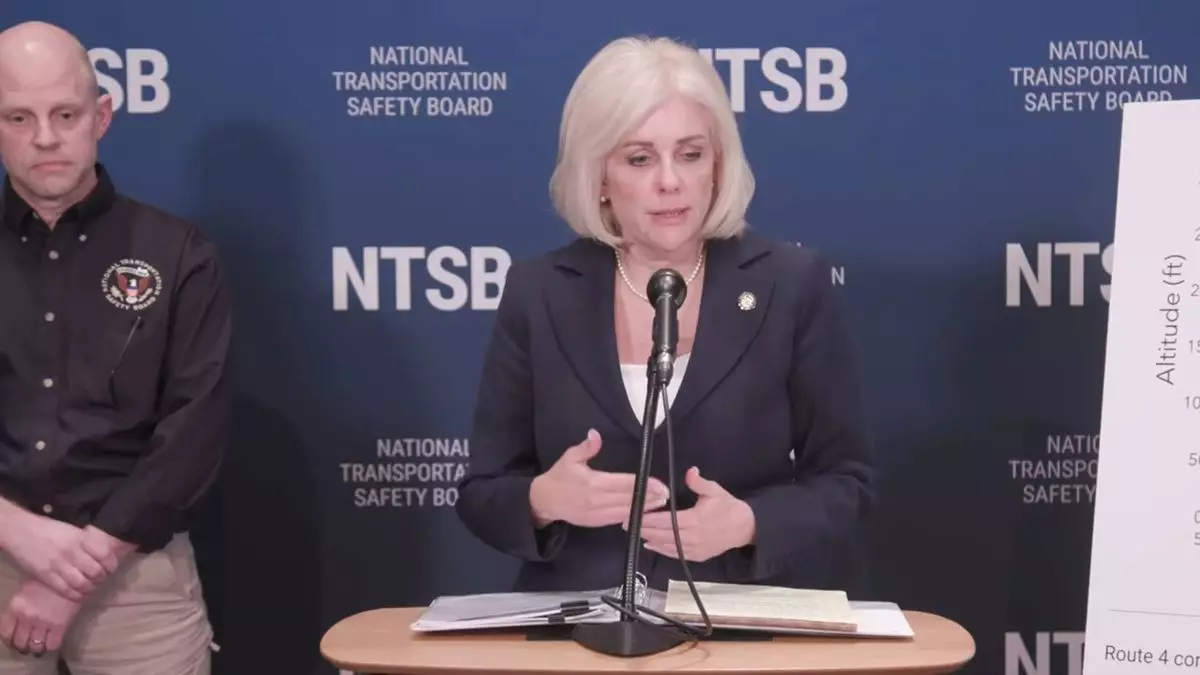On January 29, a catastrophic collision between an Army helicopter and an American Airlines passenger jet near Washington, D.C. resulted in the tragic loss of 67 lives. This incident has propelled federal investigators, particularly the National Transportation Safety Board (NTSB), to confront the glaring inadequacies in our aviation safety protocols. The dual operation of commercial airlines and military helicopters in congested airspace calls into serious question the effectiveness of existing regulations and raises urgent concerns about the safety mechanisms currently in place.
A Dangerous Closely-Knit Airspace
The NTSB’s findings expose a critical flaw in the spatial separation between aircraft within the vicinity of Reagan National Airport. Under present operations, helicopters can descend to altitudes just 75 feet away from commercial aircraft. National Transportation Safety Board chairwoman Jennifer Homendy described this separation as “insufficient and poses an intolerable risk.” The staggering statistic of 15,214 alerts concerning close encounters between planes and helicopters within a given timeframe underscores the urgency for change. Navigating the skies in such close quarters compromises not just the safety of those onboard but also the confidence in the air transportation system as a whole.
A Closer Examination of Flight Procedures
In the aftermath of the crash, preliminary investigations suggest that the helicopter may have inaccurately reported its altitude. The investigation further revealed lapses in communication between the helicopter crew and air traffic controllers—critical moments that could have averted disaster. Investigators noted that the collision occurred just below 300 feet during the jet’s landing approach, well within an altitude range that highlights the unacceptable risks of congested airspace. Such a precarious situation begs the question: why are we allowing such operational practices to persist?
The fact that the helicopter was on a “check” flight with crew members dependent on night-vision goggles raises even more flags. The Army claims that the Black Hawk pilots were highly skilled, yet their lapse in communication casts doubt on the training adequacy and the operational structures in place. In a highly complex and regulated aviation environment, the risks associated with inadequate altitude readings cannot be ignored.
Reassessing Airspace Strategies
The Federal Aviation Administration (FAA) has attempted to address these vulnerabilities by enacting measures to restrict helicopter flights near Reagan National Airport post-accident. However, these regulations merely act as a band-aid on a much larger issue rather than a comprehensive overhaul. By temporarily holding flights when helicopters are in proximity, the FAA is recognizing the necessity for separation but lacks a proactive strategy that eliminates possible points of failure entirely.
As we reflect on the events leading to this tragedy, it’s imperative to advocate for a reevaluation of not just helicopter flight operations, but the overall airspace utilization and coordination, especially in highly trafficked areas. The stakes are too high for complacency when it comes to air safety. We owe it to those we lost and to future generations to ensure that our skies are governed by the highest standards of safety, involving clear communication, strategic planning, and unwavering commitment to improvement.


Leave a Reply